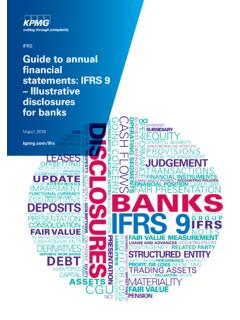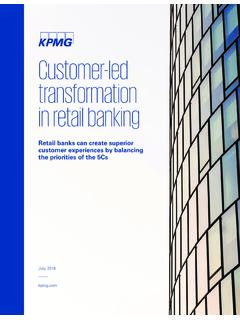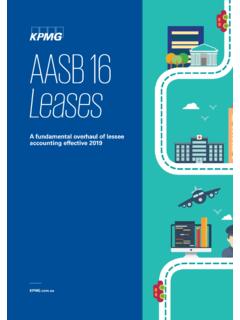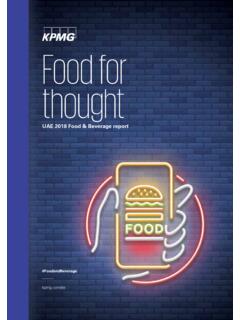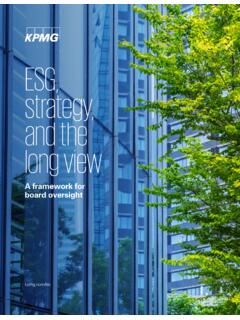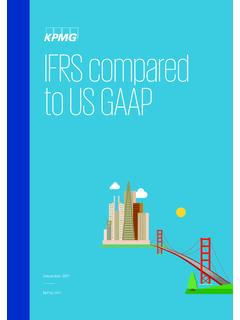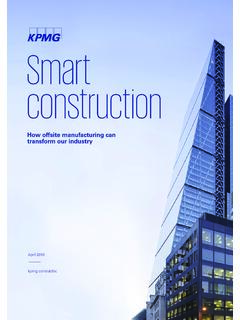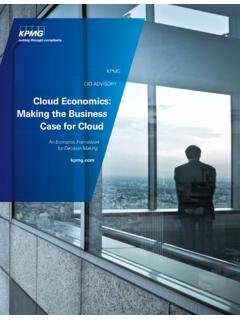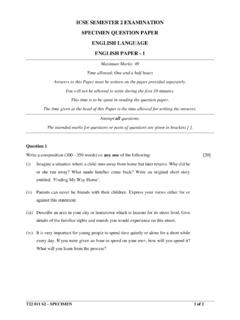Transcription of PowerPoint Presentation
1 A study by KPMG in India and GoogleMay 2017 HighlightsIndia s online education market is set to grow to USD billion and around million users by 2021 from USD 247 million and around million users in 2016 Industry overview: Reskilling and online certificationsis the largest category today at USD 93 million Primary & secondary supplemental education will be the largest category by 2021 at USD 773 million, growing at a CAGR of 60% Test preparation will be the fastest growing category in 2021, growing at a CAGR of 64%India s online students: Perceive convenience,flexibility with commencement dates and variety of study material are key motivational factors to adopt online channel Cite peers andinternet searchas the top two sources of brand awareness Indicate quality of course content as the top reason for selecting a specific brand Prefer laptopsover mobile phones for accessing the course contentTheonlineeducationmarketinIndiacu rrentlystandsatUSD247millionandis estimatedtowitnessan8x growthoverthenext5 phenomenalrisein thepaiduserbaseforonlineeducationinIndia , whichis millionusersin 2021at a CAGRof44%.
2 Thegrowthofonlineeducationin Indiawillbedrivenbya combinationofdemand, categories: Market size and key characteristicsCost of online educationAvailability of quality educationDisposable incomeEmployability quotientGovernment s digital initiativesSmartphone user baseInternet penetrationYoung population```20162021 PCAGRP rimary and secondary supplemental educationSupplement to school learning for students enrolled in primary and secondary classes in school Current demand driven by consumer behavior shift towards deeper understanding of topics in place of only clearing exams Growth will be driven by large offline student base and increased internet penetration in tier 2 cities and beyond7377360%Test preparationOnline programmes aimed at coaching students in preparation for competitive examinations High demand for
3 Engineering and government service courses Higher adoption amongst target audience and increase in the number of competitive exam aspirants will drive growth in the future4351564%Reskilling and online certificationsCourses designed to assist users in skill enhancement, which may result in certifications Technical certifications are the most popular kind of courses Category to be driven by increasing re-skilling and up-skilling needs of working population in India 3318441%Higher educationProvide an alternative to traditional higher education courses Online MBA is the most popular course in this category Anticipated to grow backed by robust governance framework and large distance learning user-base 9346338% language and casual learningLearning of non-academic subjects such as spoken english and playing guitar english language learners comprise majority of the user base Category to witness impressive rise in user base but proportion of paid users would still remain low52942%Executive Summary Online
4 Education market in IndiaMarket size (in USD million) significantpartoftheonlineeducationmarke tinIndiawitha shareof38%.Thisislargelydrivenbya ,withanestimated~280millionstudentsexpec tedtobeenrolledinschoolsby2021andincreas ingadoptionamongstthistargetaudience,onl ineprimaryandsecondarysupplementaleducat ionisexpectedtobethedominantcategoryofco urseswitha 39% ,onlinetestpreparationisexpectedtobethef astestgrowingcategoryofonlineeducation,e stimatedtogrowatanimpressiveCAGRof64%int henextfiveyearsOnline education in India: 20214 Executive Summary The future of Online EducationGamification concepts to enhance user engagement Gamification will gain application in the form of simulation of concepts, incentive based learning, level advancement badges and the likes This will drive user engagement and increase knowledge acquisitionPlayers in this space to adopt a hybrid channel approach Collaboration of online and offline channels to provide ubiquitous content and learning Online players to establish offline touch-points for students Offline players to broaden their online component to provide value added services and enhance overall learning experienceOnline education will evolve the concept of continuous learning Adoption of online education to be driven across age groups by three kinds of needs.
5 Employability Need to stay relevant in the job market Social learning Casual learning and social skill development EntrepreneurshipBusiness model evolution in line with changing customer requirements Co-developed content by online players and industry to enhance perceived value of online education Peer to peer learning among students to gain pace Value added services such as internships and live projects along with regular courses, to provide hands-on experience to studentsTechnological innovations in the supply and demand ecosystem Big data and Artificial Intelligence to assist in design of customized content Consumption of content will evolve through use of technologies like wearable devices and virtual labs Data storage on cloud to enable anytime, any-device access Table of contents01 Evolution of online education in India : An landscape in of online education ecosystem in education.
6 Key categories and market education in India - of online education in India - drivers of online level market projections - 202102 Currently dominating and emerging categories in online and secondary supplemental and online and casual learning03 Future trends in online of online education in India : An introductionOnline education in India: 20217 Education landscape in IndiaIndia has a multi-layered formal education system with ~ 260 million students[1]enrolled in more than million schools and ~ 39,000 colleges catering to million under graduate and four million post graduate[2]students. Formal education includes primary and secondary schools, graduation, post-graduation and diploma courses. Schools are governed by state and central bodies, viz.
7 CBSE, ICSE, state and international boards. India has one of the largest higher education systems in the world, primarily dominated by private sectors. Higher education in India though governed by UGC has a 3- tier structure comprising the university, college and course. Different regulatory bodies such as Medical Council of India (MCI), All India Council for Technical Education (AICTE) and the Bar Council India (BCI), among others, manage different professional courses. Informal education includes pre-primary, coaching classes, vocational education and multi-media/technology based educational courses aiding as a supplement or substitute to formal education. India s informal education market is one of the largest in the world. Pre-primary market has low entry barriers and has witnessed large number of players in the last few years.
8 Presence of a large working population and increasing requirement of skilled workers, is instrumental in the prominent growth of vocational education in India. Test preparation contributes to a significant share of informal education in online channel for education in India includes primary and secondary education to hobbies and language learning across formal and informal forms. Online players have developed B2C, B2B and C2C solutions in line with the customer s the purpose of this report, online education is defined as: 'Learning modules which can be accessed by individuals through internet enabled devices'[3]and is restricted to consumer paid services by users in : [1]- All India Survey on Higher Education (2015-2016), MHRD, 2016[2]- Educational statistics at a glance, MHRD, Dec 2016[3]- KPMG in India's research and analysis 2017 Age (years)
9 Overview of education system in India0 - 1011- 2021- 3031 - 4041- 5050+Formal educationInformal educationSecondary educationTest preparationHigher educationReskilling and online certificationsCorporate trainingsHobbies and language related learningPrimary educationPre- PrimaryTutoring/Private coachingOffline educationOnline educationFoundational educationFoundational education & working professionalsWorking professionalChannelUsersContent deliverySchoolsColleges and UniversitiesTraining InstitutesEducational InfrastructureBlended/ Instructor led educationComputer/ web based trainingText books/ Self study materialVideo/ audio recordingSimulation based trainingSource: KPMG in India's research & analysis 2017 Online education in India: 20218 Overview of the online education ecosystem in IndiaThe online platform providers play a pivotal role in the online education ecosystem.
10 Initially, the platform served as enablers by connecting prospective students and content providers. In recent times, the platform providers have increasingly played the role of content providers and curators. Online education in India has a mix of dedicated online only and offline players with an online presence. C2C business models have also emerged where the platform connects prospective teachers and students. B2B offerings are prevalent in higher education, where institutions offer degree/diploma courses to students through their own platforms or third party tie-ups assist in co-creation of industry certified content, which enhances overall acceptance of online education amongst the target user base. Improved internet connectivity and adoption of digital payment options have significantly aided in the growth of online education in models in online educationIn the current ecosystem, students are charged on the basis of type of courses/subscriptions and nature of access on the platform.
